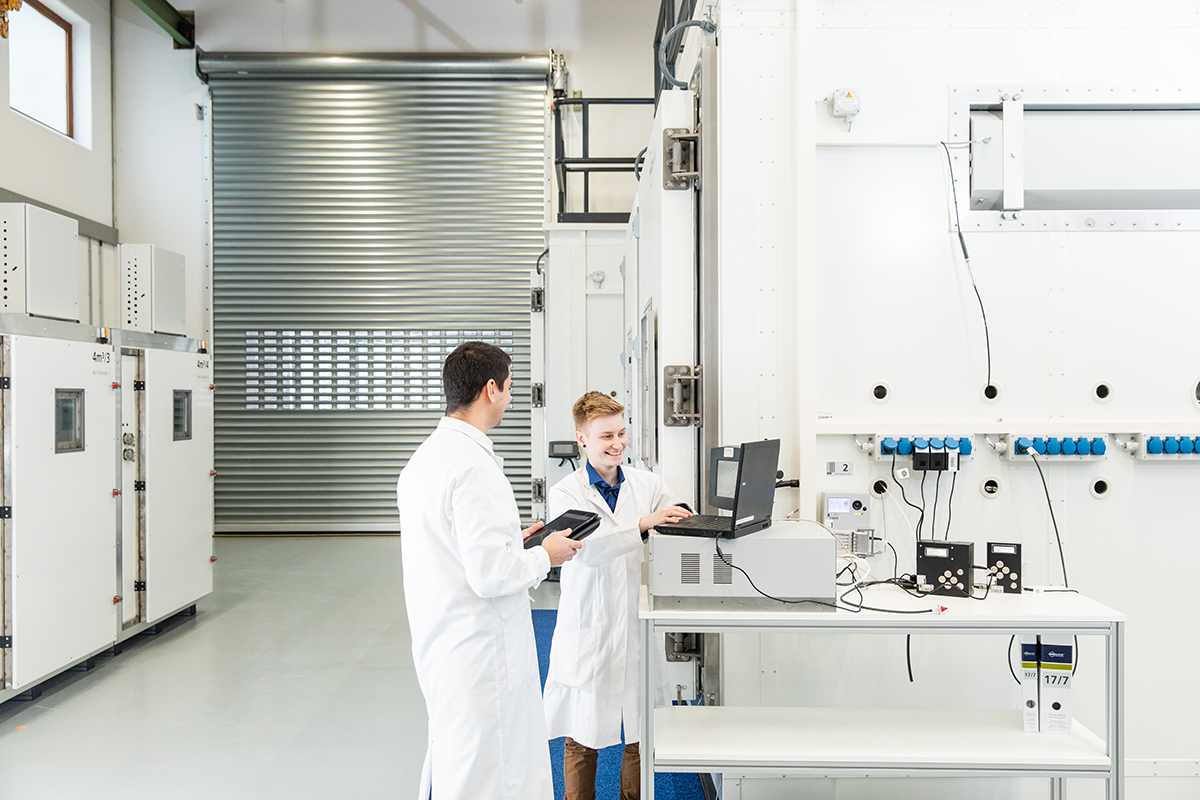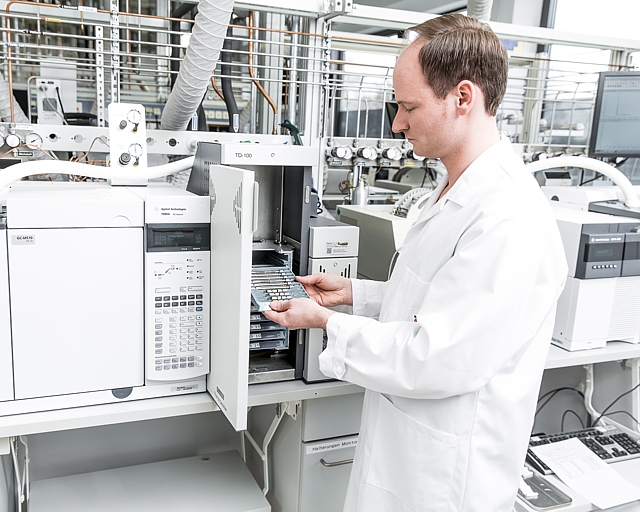The air quality in interior spaces depends on the emissions from the objects contained therein and the applied building materials. With the help of test chambers, we investigate the emissions from construction products, small and large electrical appliances, interior fixtures and furnishings as well as consumer products. For this purpose, we also develop specific testing procedures for particular application scenarios in order to identify and evaluate impurities in the room air.
With our research, we contribute to the enabling not only of the definition of appropriate threshold values for harmful emissions in interior spaces but also of the testing of products concerning their compliance. Furthermore, the additional requirements of voluntary product labels can also be specified and adhered to with our help. A further focus is placed upon the identification of off-odors. By combining test chamber measurements and other technical procedures with sensory measurements, we are able to detect the sources of odor nuisance and thereby contribute additionally to the manufacturer’s process and product optimization.
 Fraunhofer Institute for Wood Research
Fraunhofer Institute for Wood Research 
